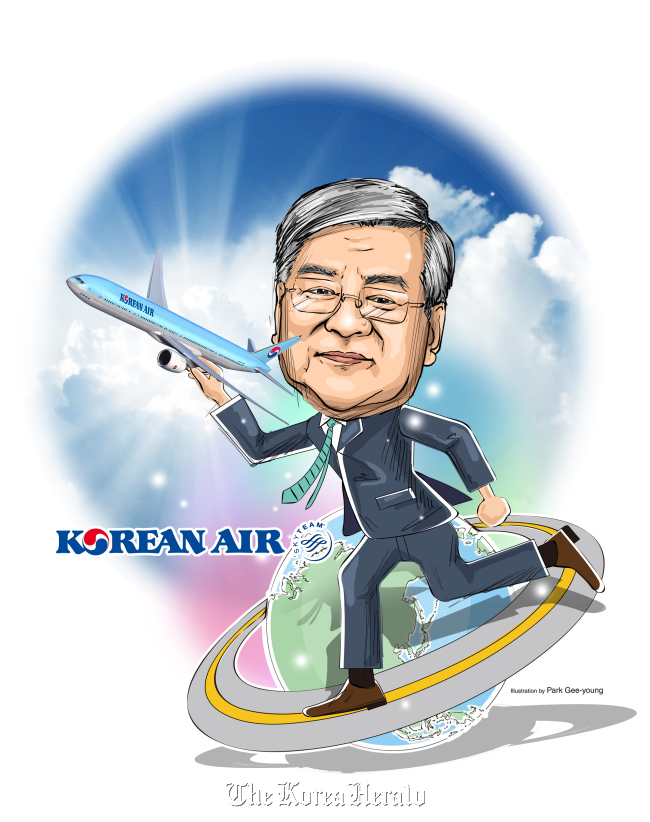[Power Korea] Korean Air flying as world-class airline
Nation’s largest flag carrier aims to rank within world’s top 10 by 2019
By Korea HeraldPublished : Feb. 18, 2013 - 19:59
In the late 1960s, when the Korean government started privatization talks for then-state-run Korean Air, no bidder was willing to take over the troubled air carrier that was facing combined losses of 2.7 billion won ($2.5 million).
At the time, Cho Choong-hoon, founder of Hanjin Group, now the 10th-largest conglomerate in Korea, had earned a pile of cash after supporting cargo delivery for the U.S. troops during the Vietnam War.
At the time, Cho Choong-hoon, founder of Hanjin Group, now the 10th-largest conglomerate in Korea, had earned a pile of cash after supporting cargo delivery for the U.S. troops during the Vietnam War.

Cho bought the airline in 1969 and helped its dramatic turnaround.
It was a humble start with seven propeller planes and one passenger jet.
Right after the acquisition, Korean Air started using the medium-range jet airliner Boeing 720 and started its first international flight connecting Seoul, Osaka, Taipei, Hong Kong, Saigon and Bangkok, the longest route in Southeast Asia.
Starting with the first international route, the carrier has expanded its global presence relentlessly. Its launch of new destinations also opened up business opportunities for many Korean companies.
The route to Los Angeles in 1971 was the first route crossing the Pacific, while the route to Paris, connecting Seoul and the French capital within just 17 hours, opened in 1973.
Flights to Saudi Arabia, which started in 1977, helped Korean builders enjoy the Middle East boom.
Since the early 1980s, the company also has strengthened the air cargo business in line with the overseas expansion of Korean businesses.
The opening of cargo terminals at Los Angeles Airport in 1981 and John F. Kennedy Airport in 1983 paved the way for the company to become one of the leading air cargo carriers in the world.
Its cargo delivery also surged 516 times from 3,000 tons in 1969 to 1.55 million tons in 2012.
Following the 1988 Seoul Olympics, the government lifted restrictions in overseas travel in 1989, prompting Korean Air to step up efforts for new route openings to cover countries such as Russia in 1990 and China in 1994.
Having coped with the Asian financial crisis in the late 1990s, Korean Air was getting ready for another big leap with Cho Yang-ho, son of the late founder, taking office as Hanjin chairman in 2003.
Celebrating the 35th anniversary of establishment in 2004, the company announced a new vision to become a world-class airline and carried out a large-scale rebranding of its corporate identity.
The signature sky-blue outfits of Korean Air crew members were also adopted at the time. Italian fashion designer Gianfranco Ferre helped redesign the attire.
Last year, Korean Air started the first direct flight to Nairobi, Kenya. Africa is one of the company’s future growth markets, together with the Middle East and Europe.
The former tiny carrier now operates 152 passenger jets, including six A380 jumbo jets. During the years, the number of destinations also jumped to 124 cities in 43 countries.
By 2019 when the company marks its 50th anniversary, it aims to expand its operations to 140 cities and carry 20 million international passengers every year.
It expects its global ranking in terms of passenger numbers to rise from the current 13th to 10th in the world.
Korean Air’s decades-old efforts to make history are still ongoing, not just in the nation’s aviation industry but also in the overseas markets.
By Lee Ji-yoon (jylee@heraldcorp.com)
-
Articles by Korea Herald



![[KH Explains] Hyundai Motor’s plan for new landmark keeps hitting bumps](http://res.heraldm.com/phpwas/restmb_idxmake.php?idx=644&simg=/content/image/2024/05/13/20240513050626_0.jpg&u=20240513192803)


![[Grace Kao] American racism against Stray Kids](http://res.heraldm.com/phpwas/restmb_idxmake.php?idx=644&simg=/content/image/2024/05/13/20240513050827_0.jpg&u=)




![[Graphic News] Over 80% of people filing bankruptcy in Seoul in their 50s and older](http://res.heraldm.com/phpwas/restmb_idxmake.php?idx=644&simg=/content/image/2024/05/12/20240512050205_0.gif&u=)







